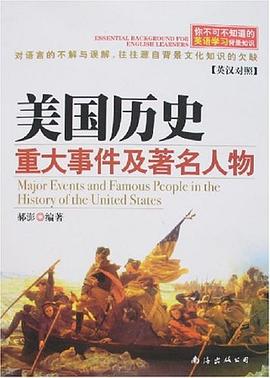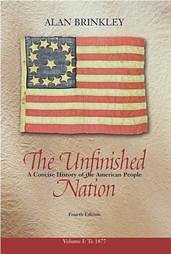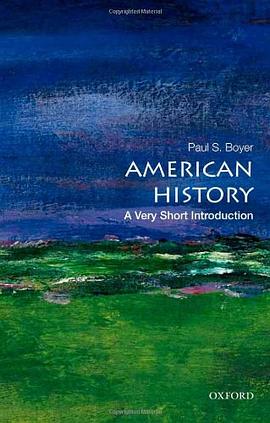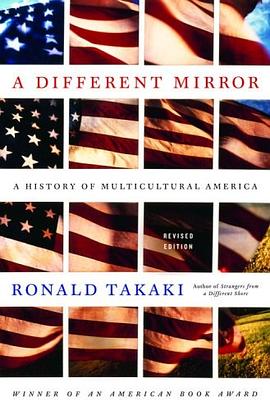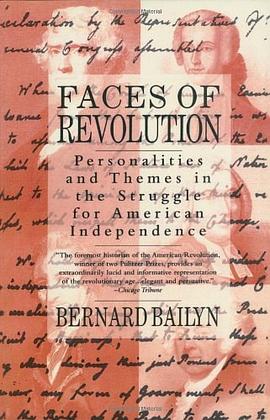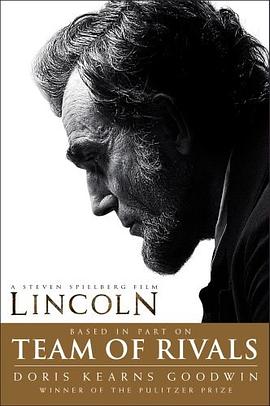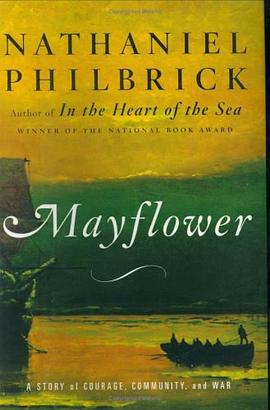

具体描述
Book Description
Nathaniel Philbrick became an internationally renowned author with his National Book Award– winning In the Heart of the Sea, hailed as “spellbinding” by Time magazine. In Mayflower, Philbrick casts his spell once again, giving us a fresh and extraordinarily vivid account of our most sacred national myth: the voyage of the Mayflower and the settlement of Plymouth Colony. From the Mayflower’s arduous Atlantic crossing to the eruption of King Philip’s War between colonists and natives decades later, Philbrick reveals in this electrifying history of the Pilgrims a fifty-five-year epic, at once tragic and heroic, that still resonates with us today.
From Publishers Weekly
In this remarkable effort, National Book Award–winner Philbrick (In the Heart of the Sea) examines the history of Plymouth Colony. In the early 17th century, a small group of devout English Christians fled their villages to escape persecution, going first to Holland, then making the now infamous 10-week voyage to the New World. Rather than arriving in the summer months as planned, they landed in November, low on supplies. Luckily, they were met by the Wampanoag Indians and their wizened chief, Massasoit. In economical, well-paced prose, Philbrick masterfully recounts the desperate circumstances of both the settlers and their would-be hosts, and how the Wampanoags saved the colony from certain destruction. Indeed, there was a first Thanksgiving, the author notes, and for over 50 years the Wampanoags and the Pilgrims lived in peace, becoming increasingly interdependent. But in 1675, 56 years after the colonists' landing, Massasoit's heir, Philip, launched a confusing war on the English that, over 14 horrifying months, claimed 5,000 lives, a huge percentage of the colonies' population. Impeccably researched and expertly rendered, Philbrick's account brings the Plymouth Colony and its leaders, including William Bradford, Benjamin Church and the bellicose, dwarfish Miles Standish, vividly to life. More importantly, he brings into focus a gruesome period in early American history. For Philbrick, this is yet another award-worthy story of survival. (May 9)
From The Washington Post's Book World /washingtonpost.com
Few periods in American history are as clouded in mythology and romantic fantasy as the Pilgrim settlement of New England. The Mayflower, Plymouth Rock, the first Thanksgiving, Miles Standish, John Alden and Priscilla ("Speak for yourself, John") Mullins -- this is the stuff of legend, and we have thrilled to it for generations. Among many other things, it is what Nathaniel Philbrick calls "a restorative myth of national origins," one that encourages us in the conviction that we are a nation uniquely blessed by God and that we have reached a level of righteousness unattained by any other country.
It is a comforting mythology, but it has little basis in fact. The voyage of the Mayflower was a painful and fatal (one crew member died) transatlantic passage by people who knew nothing about the sea and had "almost no relevant experience when it came to carving a settlement out of the American wilderness." Wherever they first set foot on the American continent, it wasn't Plymouth, and it certainly wasn't Plymouth Rock. The first Thanksgiving (in 1621) was indeed attended by Indians as well as Pilgrims, but they didn't sit at the tidy table depicted in Victorian popular art; they "stood, squatted, or sat on the ground as they clustered around outdoor fires, where the deer and birds turned on wooden spits and where pottages -- stews into which varieties of meats and vegetables were thrown -- simmered invitingly." As for Priscilla Mullins, John Alden and Miles Standish, that tale is nothing more than a product of the imagination of Henry Wadsworth Longfellow.
These cherished myths, in other words, bear approximately as much resemblance to reality as does, say, the story of George Washington and the cherry tree. In Mayflower, his study of the Pilgrim settlement, Philbrick dispatches them in a few paragraphs. It takes considerably longer, and requires vastly more detail, for him to get closer to the truth about relations between the Pilgrims and the Indians. Popular mythology tends to focus on Massasoit, the chief of the Pokanokets who allied his tribe with the English settlers, and Squanto, the English-speaking Indian who formed a close, mutually rewarding friendship with William Bradford, governor of Plymouth Plantation for three decades. Some of what that mythology tells us is indeed true, but as Philbrick is at pains to demonstrate, the full truth is vastly more complicated.
Philbrick, who lives on Nantucket Island and has written often about the sea and those who sail it -- he won the National Book Award for nonfiction in 2000 for In the Heart of the Sea: The Tragedy of the Whaleship Essex -- specializes in popular history, a genre often sneered at by academic historians but treasured by readers, who welcome its emphasis on narrative and lucid prose. He is not as graceful a stylist as the genre's most celebrated living practitioner, David McCullough, but his work is entirely accessible and gives every evidence of being sound scholarship. He appears to bring no bias to his work except a desire to get as close to the truth as primary and secondary sources allow, in refreshing contrast to the many academic historians who -- consciously or not -- have permitted political and cultural bias to color their interpretations of the past.
Because Philbrick is in search of the more factually complex and morally ambiguous truth behind essentially self-serving popular mythology, it is important to emphasize that he is not out to denigrate that mythology or those who embrace it. He celebrates the courage, resourcefulness and determination of many of the settlers, most notably Bradford and the remarkable warrior Benjamin Church; he acknowledges and describes in detail the many ways in which Pilgrims and Indians cooperated, in some cases to their mutual advantage; he pays particular tribute to Mary Rowlandson, the settler who was kidnapped by Indians and endured much hardship and privation but ultimately helped broker peace between Indians and Puritans.
He knows, though, that the story of the Pilgrims can't be reduced to doughty Englishmen and women in modest homespun and smiling Indians proffering peace pipes. Like the settlement of the West, the settlement of New England was hard, bloody and violent. If Indians made horrendous attacks on settlers -- many of those whom they killed were women and children -- the Pilgrims more than responded in kind. Many of the Pilgrims were pious folk, Puritans who crossed the ocean in hopes of worshiping as they wished -- they "believed it was necessary to venture back to the absolute beginning of Christianity, before the church had been corrupted by centuries of laxity and abuse, to locate divine truth" -- but like the settlers of Israel three centuries later, they were ready to fight when necessary, and they fought with zeal.
Encouraged by Longfellow and other mythologizers, we have tended to think of the Pilgrims as earnest, uncomplicated and rather innocent, motivated solely by religious faith and goodhearted in their dealings with New England's native population. There is a measure of truth to this, in that some settlers wanted to treat the Indians fairly and tried hard to live peacefully beside them, but they were also fiercely determined to gain a foothold in this new land and did not hesitate to act violently in order to gain one. The famous Mayflower Compact that they wrote and signed during the Atlantic crossing did contain a few of the seeds from which the United States and its democratic system eventually sprang, but the settlers were not especially democratic themselves. They disliked and suppressed dissent, enslaved Indians and shipped them off to brutal conditions in the West Indies and clung with such stubborn rigidity to their belief that they alone understood God's will that they were incapable of comprehending the Indians' very different culture.
The early years of Plymouth Plantation were exceedingly difficult but comparatively peaceful so far as relations with the many Indian tribes were concerned. Gradually, though, as English settlers moved ever deeper into New England and as Indians grasped the full extent of the threat to their established way of life, the settlers grew more belligerent, and the Indians grew more hostile. Indian raids on isolated settlements became more frequent and more brutal. The burning of Springfield in 1675, in what is now known as Massachusetts (after a tribe that was especially unfriendly to the Puritans), seems to have been the turning point. One prominent settler said it proved that all Indians were "the children of the devil, full of all subtlety and malice," a sentiment that many others came to share.
The ultimate result was an oddly forgotten chapter in American history: King Philip's War. Taking its name after the son of Massasoit who became chief of the Pokanokets, this dreadful little war started not long after the raid on Springfield and lasted for about two years, with gruesome consequences for everyone involved. Plymouth Colony lost eight percent of its male population -- by comparison, "during the forty-five months of World War II, the United States lost just under 1 percent of its adult male population" -- but these losses "appear almost inconsequential when compared to those of the Indians." The total Indian population before the war was about 20,000; by war's end, "at least 2,000 had been killed in battle or died of their injuries; 3,000 had died of sickness and starvation, 1,000 had been shipped out of the country as slaves, while an estimated 2,000 eventually fled to either the Iroquois to the west or the Abenakis to the north. Overall, the Native American population of southern New England had sustained a loss of somewhere between 60 and 80 percent."
It was a costly and entirely unnecessary war, brought about by Philip's vanity, Puritan stubbornness and a pervasive atmosphere of mistrust and misunderstanding. After the war finally ended, it quickly vanished from the public consciousness except in the places where it was fought: "Thanksgiving and its reassuring image of Indian-English cooperation became the predominant myth of the Pilgrims. . . . In the American popular imagination, the nation's history began with the Pilgrims and then leapfrogged more than 150 years to Lexington and Concord and the Revolution."
All of which is very much in the American grain. We like our history sanitized and theme-parked and self-congratulatory, not bloody and angry and unflattering. But if Mayflower achieves the wide readership it deserves, perhaps a few Americans will be moved to reconsider all that.
From Booklist
Departing from his customary nautical stories, including the phenomenally popular In the Heart of the Sea (2000), Philbrick makes landfall with the saga of the Pilgrims. By necessity, all modern writing about the founding colonists relies on William Bradford's Of Plymouth Plantation, interpreting it through modern historical sensibilities that incorporate native perspectives on the newcomers from across the ocean. Long gone is the once inculcated version of friendly Indians helping starving English religious refugees through hard times. The scholarly thesis now has the Pilgrims arriving amid coastal Indian societies that had been decimated by a pandemic. The Pilgrims appeared in 1620 as a potential ally to the weakened Pokanokets and their sachem Massasoit against neighboring enemies: the Massachusetts and the Narragansetts. Philbrick essentially recounts this reigning interpretation with sensitivity to landscape description, narrative suspense, and understanding of motivations: piety, wrath, gratitude, duplicity--a panorama of human character and historical portent is on display in Philbrick's skillful rendering. Chronologically tracking the fortunes of the alliance struck by Massasoit with Bradford, Philbrick carries events through the second generation, in whose collective hands the alliance exploded into King Philip's War of 1675-76. A sterling synthesis of sources, Philbrick's epic seems poised to become a critical and commercial hit.
Gilbert Taylor
From AudioFile
Author Nathaniel Philbrick strips away the prettiness of what we learned in grade school about the Pilgrims and their religious beliefs. We hear accounts of their pulling out the bowels of live Indians, stealing their food, and taking their possessions. Life in the New England colonies offered more death and disease than freedom at first, and the truthful aspects of the settlers' struggles must be rated "R." George Guidall narrates the gruesome details as he tells a cozy story, varying his expression and emphasis to maintain the listener's interest in every sentence. Somehow he knows how to pronounce the hundreds of native names and places as if he used the words every day. J.A.H.
From Bookmarks Magazine
Mayflower rethinks the events and players that gave rise to a national mythology about Pilgrims living harmoniously with their Indian neighbors. Instead, Philbrick tells a story of ethnic cleansing, bloody wars, environmental ruin, and the deterioration of English-Indian relations. While he introduces familiar elements, Philbrick also recasts well-known characters like Miles Standish ("Captain Shrimp"), William Bradford, and Benjamin Church. Most critics agree that he provides a well-researched, unbiased revisionist history (though we should note that for years many people have been reading about the environmental devastation of New England, the bloody Indian-English wars, and the less-than-pious Pilgrims). If not as gripping as the National Book Award?winning In the Heart of the Sea (2000), particularly the second half, Mayflower nonetheless provides a harrowing account of survival and, despite its grim themes, a celebration of courage.
Book Dimension
length: (cm)19.7 width:(cm)12.8
作者简介
《纽约时报》畅销书《大海深处》(该书获得“国家图书奖”)和《光荣之海:伟大的南太平洋探险,1838—1842》(该书获“西奥多和富兰克林•D 罗斯福海军历史奖” )的作者。1986年以来他一直在楠塔基特岛定居。
目录信息
读后感
之前对于“五月花号”的印象就是:契约,感恩。原来这和所谓的传统一样,是编造的神话。 天路客之所以跑到新英格兰那鸡不生蛋、鸟不拉屎的地方去,是因为他们的宗教信仰。如果按照他们最初的设想,应该是建立一个由清教徒组成的、单一结构的社会。但由于现实的经济原因,到达新...
评分美国建国前到美国西进这段历史 是有着特别的魅力的~ (好吧我承认大部分地区大部分时期的历史对我来说都是很有魅力的XD~~) 这本书读起来 就像在看回忆录 书中的人物都是作者的朋友或者作者熟悉的人 可以想见菲尔布里克对这段历史这些人物所倾注的感情 遗憾的是 这么一段...
评分这是一本非常不错的书,翻译的水平也不赖,所以打算记一点东西,作为笔记。 一群在英国本土受到迫害的清教徒,搭乘一艘叫做五月花的船,飘过大西洋,于1620年11月抵达北美。移民们在这里扎根定居,繁衍发展。这就是大家公认的现代美国的起源。 读这本书...
评分美国建国前到美国西进这段历史 是有着特别的魅力的~ (好吧我承认大部分地区大部分时期的历史对我来说都是很有魅力的XD~~) 这本书读起来 就像在看回忆录 书中的人物都是作者的朋友或者作者熟悉的人 可以想见菲尔布里克对这段历史这些人物所倾注的感情 遗憾的是 这么一段...
评分很早就听说这本书了,知道是一本历史大作,久久不敢买英文原版来看,因为怕太枯燥和深奥,无法看完。去北京开会的时候,在清华园附件的万圣书店看到了这本书,买下。 故事从清教徒无法忍受英国的政教合一的管制,移居到低地之国(荷兰)这个相对有宗教自由的国家开始。那里,...
用户评价
Bullshit bullshit bullshit
评分Bullshit bullshit bullshit
评分Bullshit bullshit bullshit
评分嗯...反正是看了400页历史书的感觉
评分QAQ终于读完了还要写book report,赶紧毕业这种日子真心过够了
相关图书
本站所有内容均为互联网搜索引擎提供的公开搜索信息,本站不存储任何数据与内容,任何内容与数据均与本站无关,如有需要请联系相关搜索引擎包括但不限于百度,google,bing,sogou 等
© 2026 book.wenda123.org All Rights Reserved. 图书目录大全 版权所有



